[ad_1]
“Let me confide the best part,” laughs 66-year-old Rita Mathur, her voice ringing with childlike enthusiasm as she describes her first trek to Everest Base Camp (5,364 metres) in October 2021. “A lot of young trekkers stopped to ask my age and take a picture to show their mothers and grandmothers.”
Though she may have been an older than the typical Everest trekker, Rita’s story is not unusual anymore . “I notice more and more senior citizens going for these trips,” says Rahul Ogra, founder, Mystic Himalayan Trails, who recently accompanied a group of senior citizens to Ladakh in freezing temperatures last winter.
A passion for photography, Nature and bird watching has fuelled this trend, along with social media. Pointing out the role of television, Rahul says, “Shows on Discovery Travel and Living are aspirational. When seniors see people their age in America and New Zealand scale new peaks, they wonder, ‘Why are we stuck at home minding our grandchildren?’ They realise there is life beyond grihastha as well.”
Colonel Romil Barthwal (retired) of Boots and Crampons, an adventure and mountaineering company, agrees. He has noticed a 20% increase in senior citizens going on treks over the past few years.
“In a group of 10, we find at least three senior citizens either travelling solo or with friends and family; Himachal Pradesh, Nepal, Africa and Kilimanjaro are some of the destinations they prefer,” he says, explaining that treks are tourist-friendly, involve a gradual elevation gain and have well established emergency handling abilities and resources.,”
Slow and steady training
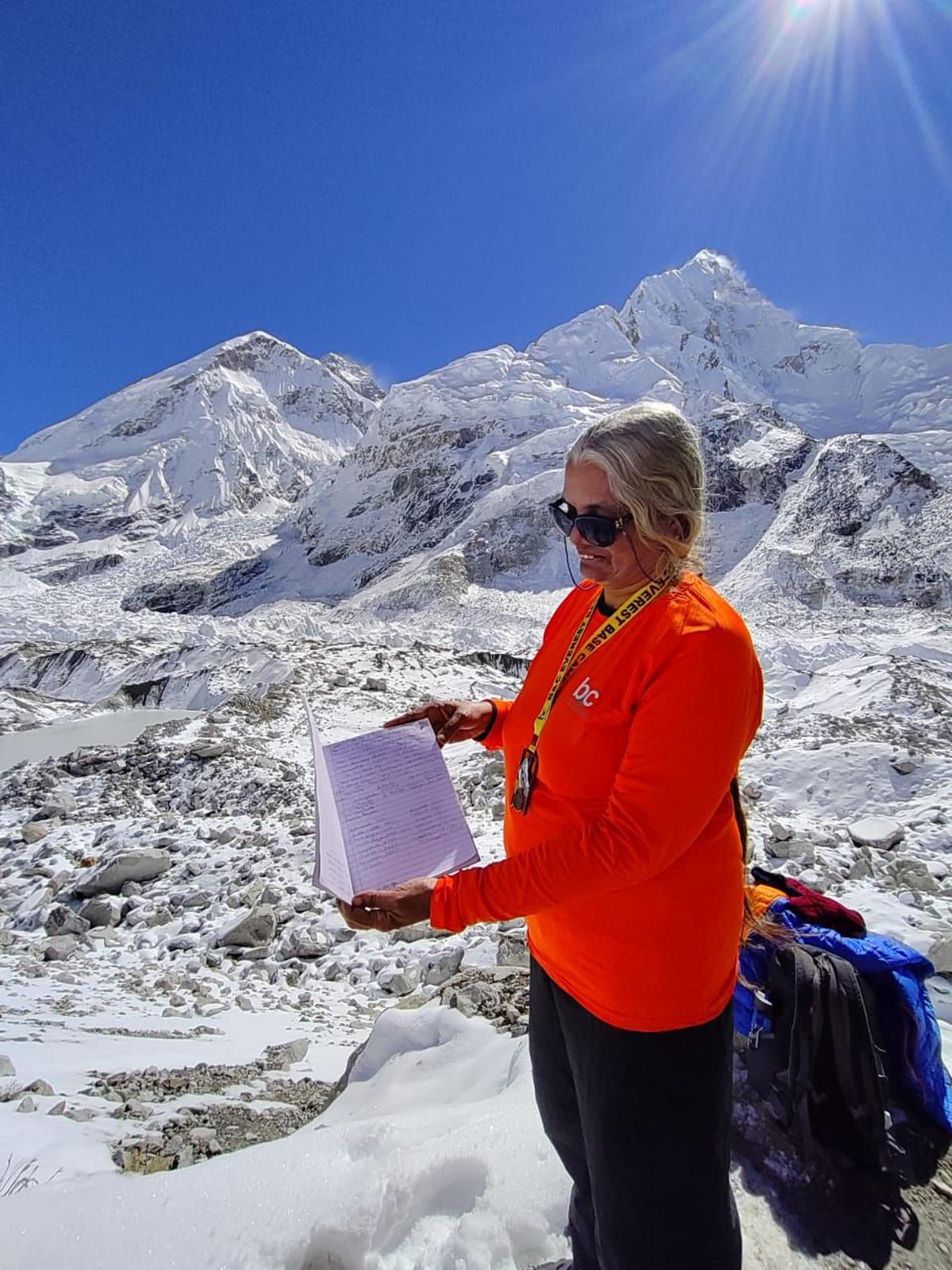
Rita Mathur
| Photo Credit:
special arrangement
With a passion to fulfill a childhood dream to visit Everest, Rita joined The Himalayan Club on Facebook, which has many senior citizens among its nine lakh members. Once she decided to finally make the trip, she began her six months of training for the challenging climb from Lukla (9,200 feet) to Everest Base Camp (17,500 feet).
Her programme included flyover walks (the gradient offers resistance training to gain muscle strength) in the morning for three months, followed by an eight-kilometre walk, four days a week.
“I maintained a balanced diet with more protein, green vegetables and fewer desserts, as advised by the doctor, but the most important part was breaking into my shoes,” says Rita, adding with a laugh that she wore her trekking shoes constantly for two months. “A sari and heavy boots became my style statement!”
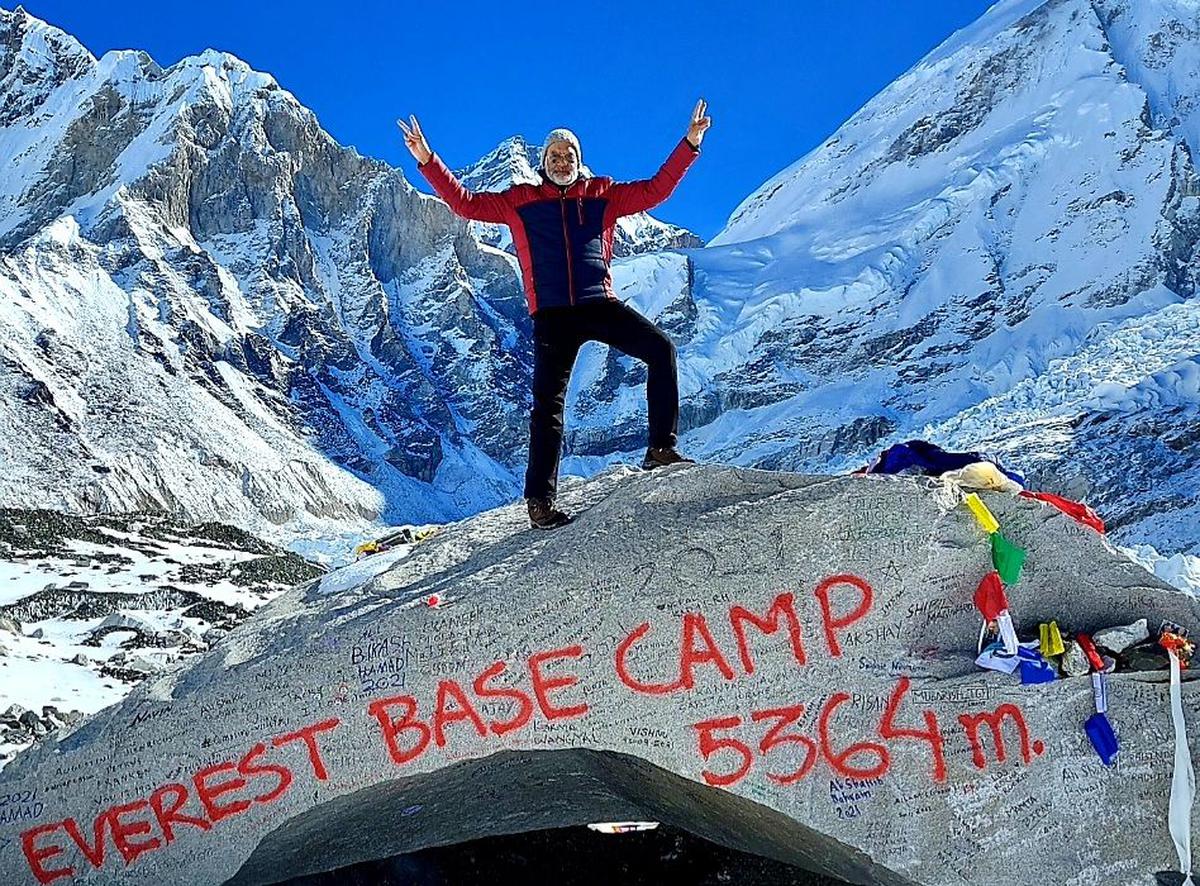
Raman Sood
| Photo Credit:
special arrangement
On the other hand, training fits seamlessly into 70-year-old Raman Sood’s active lifestyle. A Mumbaikar and former banker, his daily routine includes walking, jogging, weight training and calisthenics. He completed a 21-day Three Passes-Kala Pathhar- Everest Base Camp trek in October 2021. “No official records about age are available but I was told by our guides and other tour operators that I am probably the oldest Indian to undertake this arduous trek,” says Raman with pride.

Raman Sood with fellow trekkers
| Photo Credit:
special arrangement
Raman loves to trek as it gives him an opportunity “to connect with Nature, enhance survival instincts, inculcates team spirit and teaches us to live a minimalist life”. He says he doesn’t feel his age in a group of youngsters.
His major treks include a 22-day one from Lamayuru (Ladakh) to Darcha (Himachal Pradesh), through Anantnag, Aru, Kolahai glacier and Kunzum La.
A wish to be active and also to introduce his six-year-old daughter to the outdoors inspired Tiruchi-based Dr Sunil Srinivasan to take up trekking at 50. Now 63, the paediatrician occasionally accompanied by his wife Dr Shanti, has done seven treks including to Vasuki Tal, Bandarpunch, Kanchenjunga and Kailash Mansarovar. For him, “trekking is not a mere hobby but a necessity”.
Shared experiences
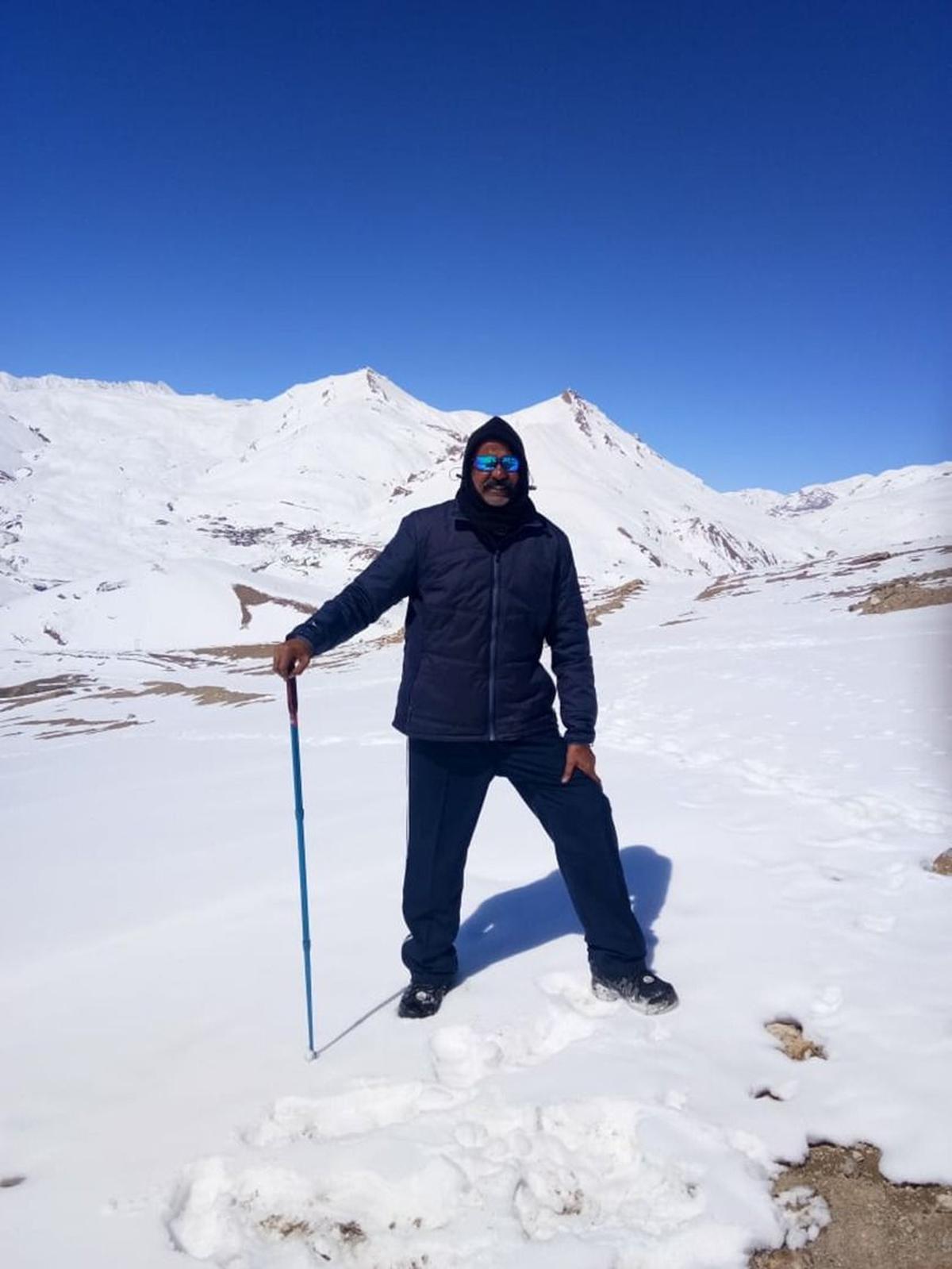
Dr Sunil Srinivasan
| Photo Credit:
special arrangement
Dr Sunil says, “We are so caught up in daily life that we rarely see the outdoors. Going in a group makes you feel younger and experiencing the simple pleasures of walking in the snow works as a great mental tonic. The only thing that matters is to get to the next point.” Trekking also opened new avenues for the doctor who learnt tai chi initially in Sri Lanka and then from a master in Guilin in China.
“Trekking is not a walk in the park; It involves stamina, lung power and strong legs. For people who have crossed a certain age, the challenges get magnified as the body is not as robust as it used to be,” says Ogra. A thorough check-up by a physician on factors that could be detrimental at high-altitudes and investing a month-and-half in cardiovascular exercise are important, he adds.
The surge in older trekkers has prompted more companies to curate group treks for them, with special itineraries. These take diets, exercise regimens, and medication into account.
Col Barthwal suggests tailor-made treks with porter services as the most comfortable way for senior citizens to trek. Members motivate each other, set realistic targets and progress is monitored regularly.
“The first and foremost is not to have a knee-jerk reaction and take off just because a person of your age has been on an expedition,” he says, adding that an active lifestyle is a prerequisite. He suggests walking three to four times a day putting in 4,000 to 5,000 steps initially, then slowly building up the pace.
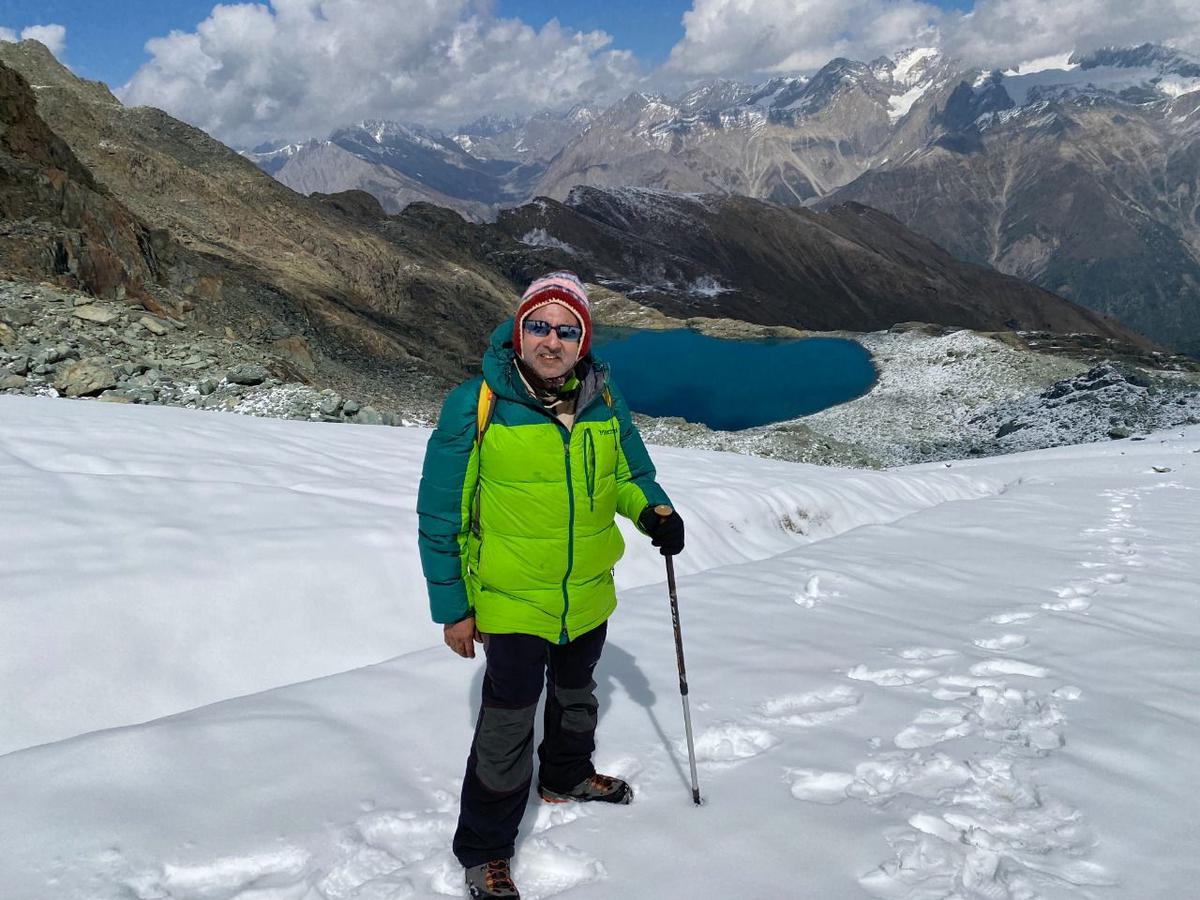
Dr Srinivasan Periathiruvadi
| Photo Credit:
Special arrangement
The memory of his first trek in 2006 with a group of friends to Gomukh is fresh in Dr Srinivasan Periathiruvadi’s mind. Calling mountains his second home, the chairman and co-founder of Chennai-based Jeevan Stem Cell Foundation says he prefers to either travel solo or with a small group of friends. With a passion for landscape photography, the 68-year-old feels choosing the right companion is important.
“It is not a marathon that we are running as a group; we need to understand each other’s strengths and weaknesses so that nobody pushes the other person to rush them into things.”
Preparing for his next trek in April to Dzongri in Sikkim, Dr Srinivasan says, “Respect Nature and your body, and learn to listen to it to understand the early warning signs of mountain sickness.”
After more than 45 years of scaling peaks, 70-year-old J Ramanan and his 62-year-old wife Vrinda are heroes in the trekking community. The duo from Tiruchi organises camps to Tapowan and Nandanvan, Ruinsara Tal, Kedar Tal (Uttarakhand), Alakapuri glacier above Badrinath, Dah Hanu valley in Kargil and Kuvari Kal (outer Nandadevi Sanctuary), Uttarakhand, to introduce trekking to 10-year-olds.
Trained in mountaineering from Nehru Institute of Mountaineering in Uttarkashi, the duo maintains that the real beauty of the Himalayas can be experienced with small treks in the Garhwal and Kumaon ranges. “Unlike routine treks of Everest and Annapurna Base camp, people above 60 can opt for easy treks of four or five days and still enjoy the joys of mountaineering,” says Ramanan.
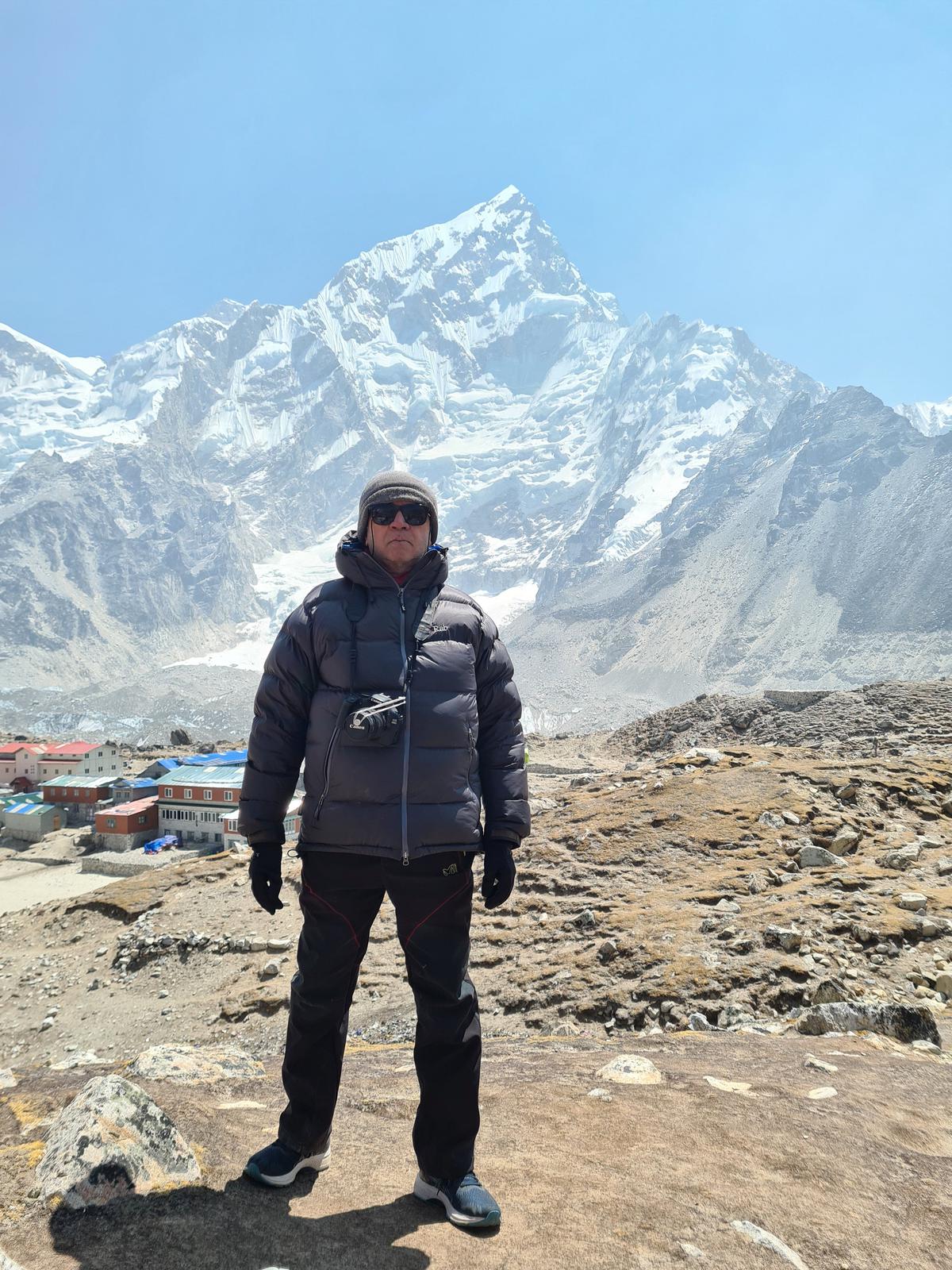
Prakash Chandra Jha
| Photo Credit:
Special arrangement
Delhi-based Prakash Chandra Jha, a former chairman of the Central Board of Indirect Taxes and Customs, says his love for the mountains is unparalleled. The 72-year-old<SU>sums up the feeling of trekking to Everest Base Camp in April 2021.
“Scenic beauty, serenity and the solitude that one gets at is a gift to the soul. Besides enjoying a sense of freedom, I like to trek just to be sure of how physically fit I am.”
Check list
While on the trek, senior citizens need medication, insurance (mandatory), a porter to carry luggage and knee-support if needed.
An overall check-up and clearance from the doctor. Extra caution if you have hypertension, diabetes, or an underlying pulmonary condition.
Adequate precautions if you are a cardiac patient
Being well-versed with climatic conditions to prepare accordingly
Carrying medicines including prescription medication.
Indulging in a cardiovascular fitness regimen a month-and-half before the trek.
A three-four day trek or a maximum of 10-days is ideal for senior citizens.
The cost factor is less (approximately ₹ 70,000 to ₹ 80,000 for 10 days and ₹ 40,000 to ₹ 50,000 for a week-long trek) for a large group of 40 people but small groups (10 members or even less) have personalized attention (the cost is more depending on the plan).
(compiled inputs)
[ad_2]



